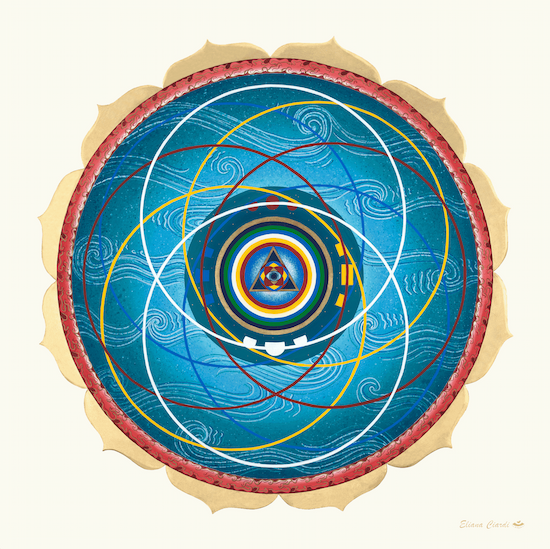
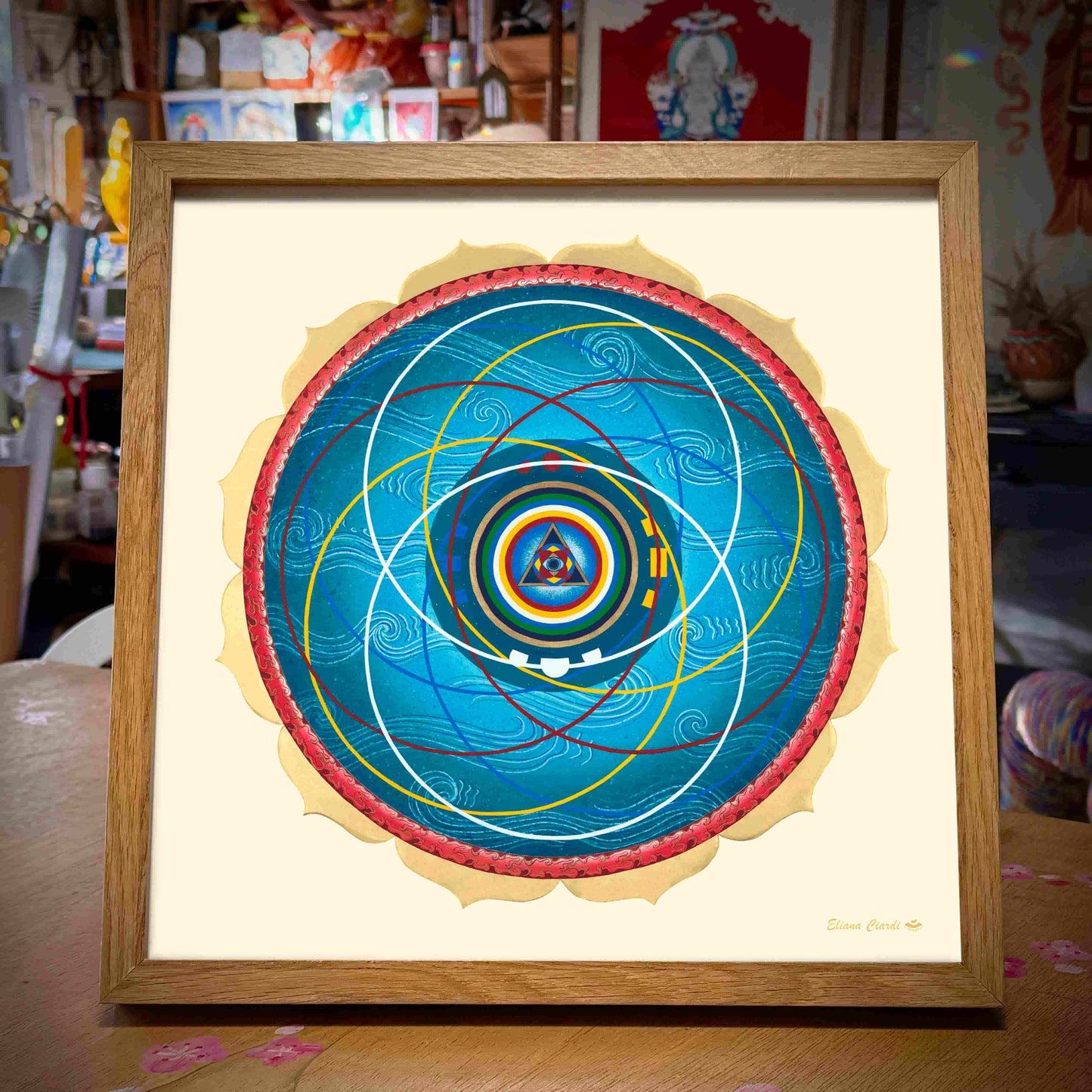


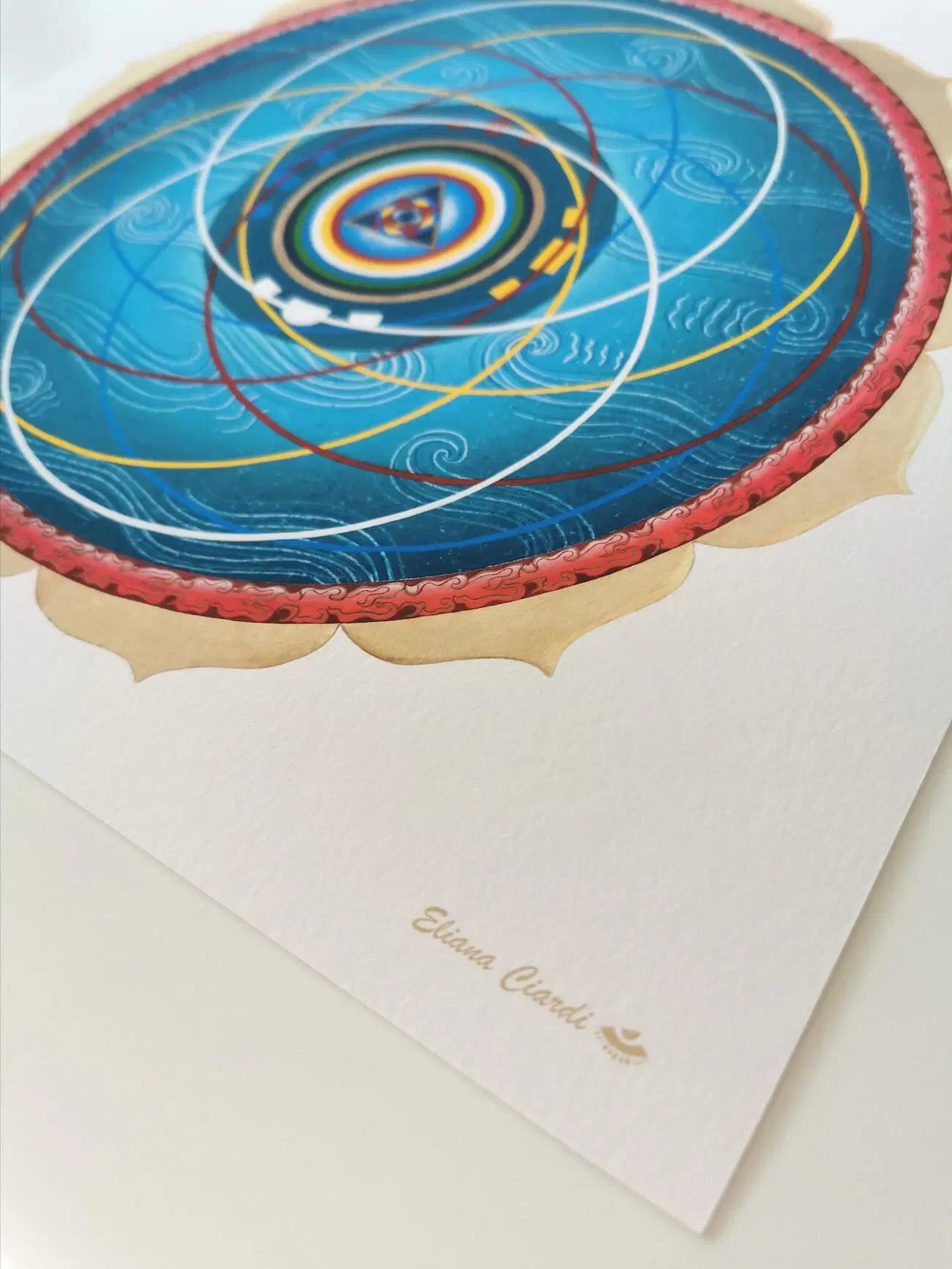


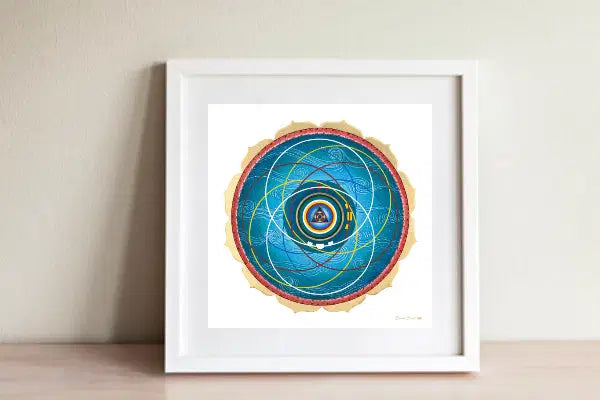
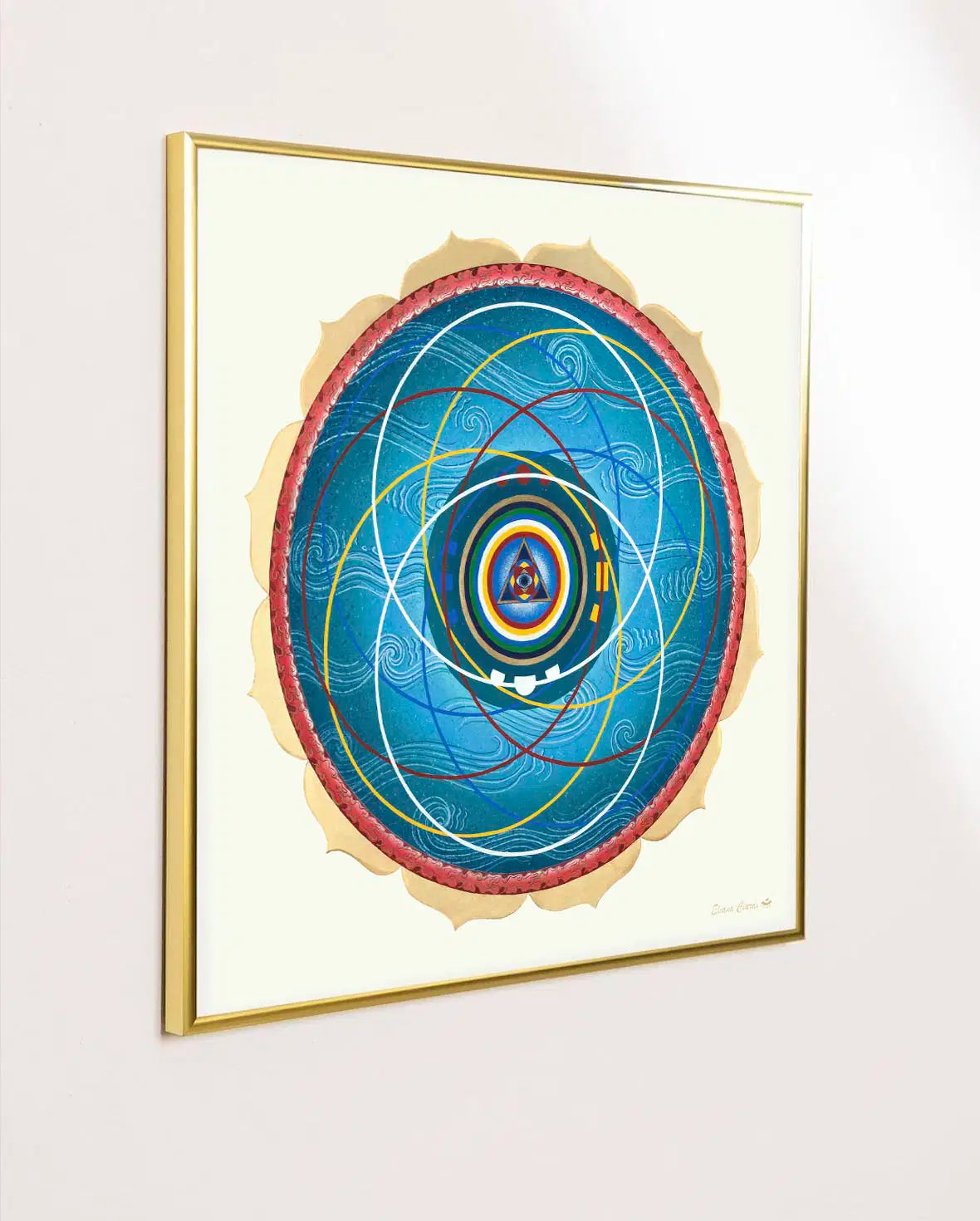

TIBETAN COSMOLOGY
Sacred Geometry - Mandala - ArteSanae Collection
Tibetan Cosmology – Meaning and Origin
Discover Tibetan Cosmology through this unique handcrafted reproduction, printed on Prestige Fine Art Textured Silk 270 gsm paper. Each piece is individually hand-enhanced with genuine gold pigment, capturing the light and energy of the original works created with real gold leaf. The 100x100 cm version includes actual gold leaf. This exclusive artwork is hand-signed, offering genuine and authentic luxury.
Symbolism and Structure
The mandala reflects the interconnection between the cosmos and our inner being. With precise geometric symmetry and meticulous design, each section corresponds to specific elements, energies, and cosmic forces. At its center, the Eye symbolizes awakened consciousness, inviting you to look beyond the surface and connect with profound truths.
Mount Meru: The Cosmic Center
Mount Meru represents the axis mundi that connects the heavens, earth, and the underworld. In Tibetan Buddhism, it is the abode of the gods and the source of spiritual nourishment. This reproduction invites you to discover your own inner Mount Meru, promoting personal elevation and transformation.
Subtle Bodies and the Five Elements
The subtle bodies represent levels of existence beyond the physical plane. Each body interacts with the five elements, providing a holistic approach to emotional harmonization and self-awareness:
- Water (Circle – White): Adaptability and emotional healing
- Earth (Square – Yellow): Grounding and humility
- Fire (Triangle – Red): Energy, passion, and self-control
- Air (Crescent Moon – Green): Movement, communication, and harmonious relationships
- Space (Sesame Seed – Blue): Consciousness and inner wisdom
A Unique Visual and Spiritual Experience
Every reproduction of the mandala features hand-applied gold pigment interventions that catch the light differently depending on the viewing angle. This technique creates a luminous glow that enhances the details and imbues the artwork with special energy. Placing this piece in your home or studio creates a space of focus, calm, and harmony—perfect for meditation or contemplation.
Exclusivity and Craftsmanship
These are not numbered editions or industrial copies: each is a one-of-a-kind work, individually hand-intervened, where every detail reflects your personal connection to sacred tradition and geometry. The hand-signature guarantees authenticity and exclusivity without resorting to artificial numbering systems that restrict creative freedom.
Benefits of Owning This Reproduction
- Elevates the energy of your space with gold details that reflect light and create visual harmony
- Supports meditation, concentration, and mental clarity
- Tangibly connects Tibetan tradition, art, and spirituality
- An exclusive collectible piece that combines profound aesthetics and meaning
Make this handcrafted Tibetan Cosmology reproduction yours and transform any space into a sanctuary of peace, balance, and beauty. Availability is limited, ensuring each piece retains its authenticity and exclusivity. Acquire yours today and experience the power of sacred geometry in your surroundings.
SACRED GEOMETRY - ARTESANAE COLLECTION
-
FIVE ELEMENTS
Regular price From €135,00Regular price -
TIBETAN COSMOLOGY
Regular price From €135,00Regular price -
METATRON'S CUBE
Regular price From €135,00Regular price -
DEEP EARTH
Regular price From €135,00Regular price -
GODDESS PRAJNAPARAMITA
Regular price From €135,00Regular price -
GOLD TRIQUEL
Regular price From €135,00Regular price -
GOLDEN WAVE
Regular price From €135,00Regular price -
PRAJNAPARAMITA
Regular price From €135,00Regular price -
SRI YANTRA
Regular price From €135,00Regular price





















